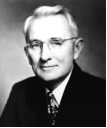题目内容
【题目】假定英语课上老师要求同桌之间交换修改作文,请你修改你同桌写的以下作文。文中共有10处语言错误,每句中最多有两处。每处错误仅涉及一个单词的增加、删除或修改。
增加:在缺词处加一个漏字符号(∧),并在其下面写出该加的词;
删除:把多余的词用斜线(\)划掉;
修改:在错的词下画一横线,并在该词下面写出修改后的词。
注意:1.每处错误及其修改均仅限一词;2.只允许修改10处,多者(从第11处起)不计分。
It is said a chemical factory will be built near our school. I thought it wrong to do so. Although the factory will make a lot of money for our city, but it will do us more harm than good.
The drink water will be badly polluted. The airs over the city will be polluted, either. What's more, the chemical factory will be locate where we students play games and have sports after school. I fit is occupied, they will have no place for sports and fun. So we strong suggest that the government takes action to prevent the works from being built.
【答案】
【解析】
本文是一篇议论文。作者对在学校附近建造化学工厂提出了自己的反对意见,并说明了原因。
第一处:考查主语从句连词。句意:据说在我们学校附近会建造一个化学工厂。根据句意可知,it is said that…是主语从句的常用句型,意为“据说……”故在said后加that。
第二处:考查时态。根据语境可知,此处应该使用一般现在时,故将thought改为think。
第三处:考查连词用法。根据语境可知,although引导让步状语从句,but后加并列句,两个词不能同时出现在句子中,故删掉but。
第四处:考查形容词。句意:饮用水会被严重污染。drink是动词原型不能修饰名词,再根据句意可知,drinking意为“可饮用的”,符合句意,故将drink改为drinking。
第五处:考查名词的数。air意为“空气”,是不可数名词,没有复数形式,故将airs改成air。
第六处:考查副词。句意:城市上空的空气也会被污染。根据句意可知,either意为“也”,用于否定句中,故将either改为too。
第七处:考查动词。句意:化学工厂要坐落在我们学生们放学之后做游戏和锻炼的的地方。根据句意可知,be located意为“坐落于”,故将locate改为located。
第八处:考查代词。句意:如果被占据了,我们就没有地方做运动和娱乐了。根据句意可知,此处they指代错误,故将they改为we。
第九处:考查副词。分析句子结构可知,strong是形容词,不能修饰动词,故将strong改为strongly,意为“强烈地”。
第十处:考查时态。根据语境可知,suggest意为“建议”时,其后的宾语从句的时态要用虚拟语气,故为(should)+动词原形,故将takes改为take。

 天天向上一本好卷系列答案
天天向上一本好卷系列答案 小学生10分钟应用题系列答案
小学生10分钟应用题系列答案【题目】
|
|
【1】In the film review, what is Paragraph A mainly about?
A. The introduction to the leading roles.B. The writer’s opinion of acting.
C. The writer’s comments on the story.D. The background information.
【2】According to the film review, “the monster” (Paragraph B) refers to _____.
A. a gun-crazy hunterB. a brainy dog
C. a scary rabbitD. a giant vegetable
【3】Which of the following is a reason why the writer recommends the film?
A. It’s full of wit and humour.
B. Its characters show feelings without words.
C. It is an adventure film directed by Peter Sallis.
D. It is about the peaceful relationship between man and animals.










